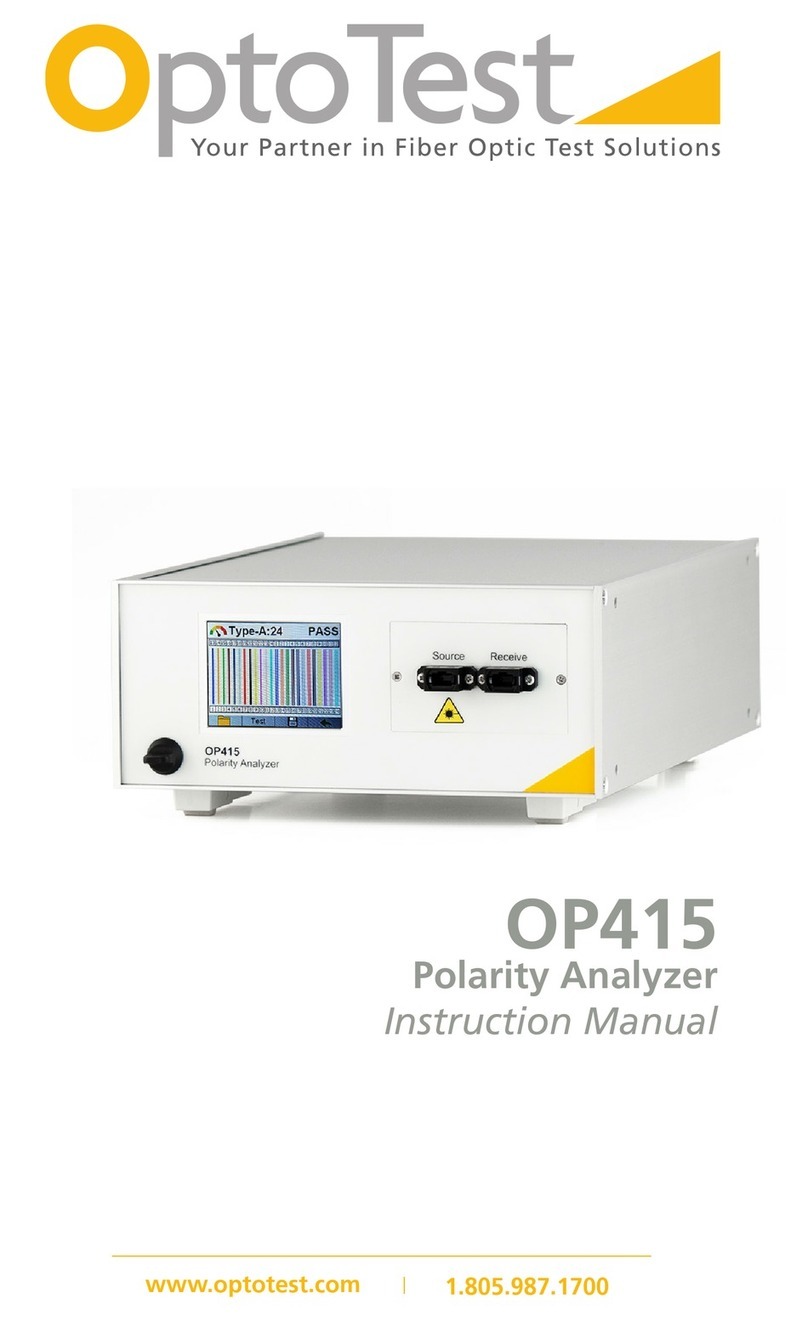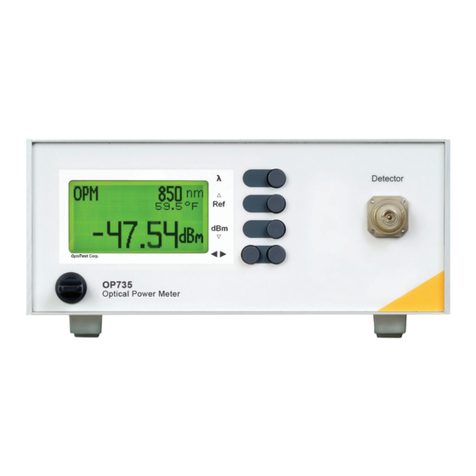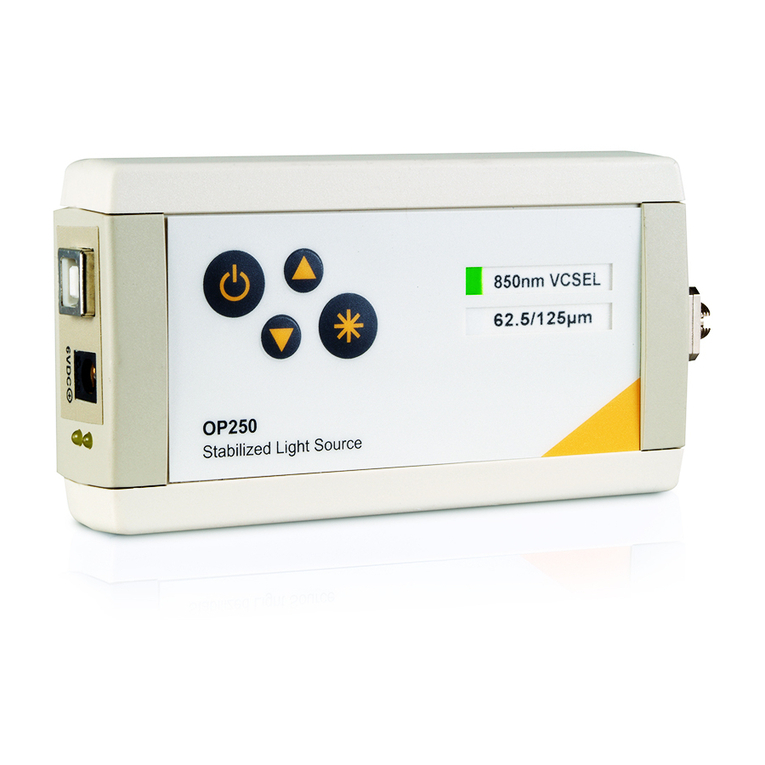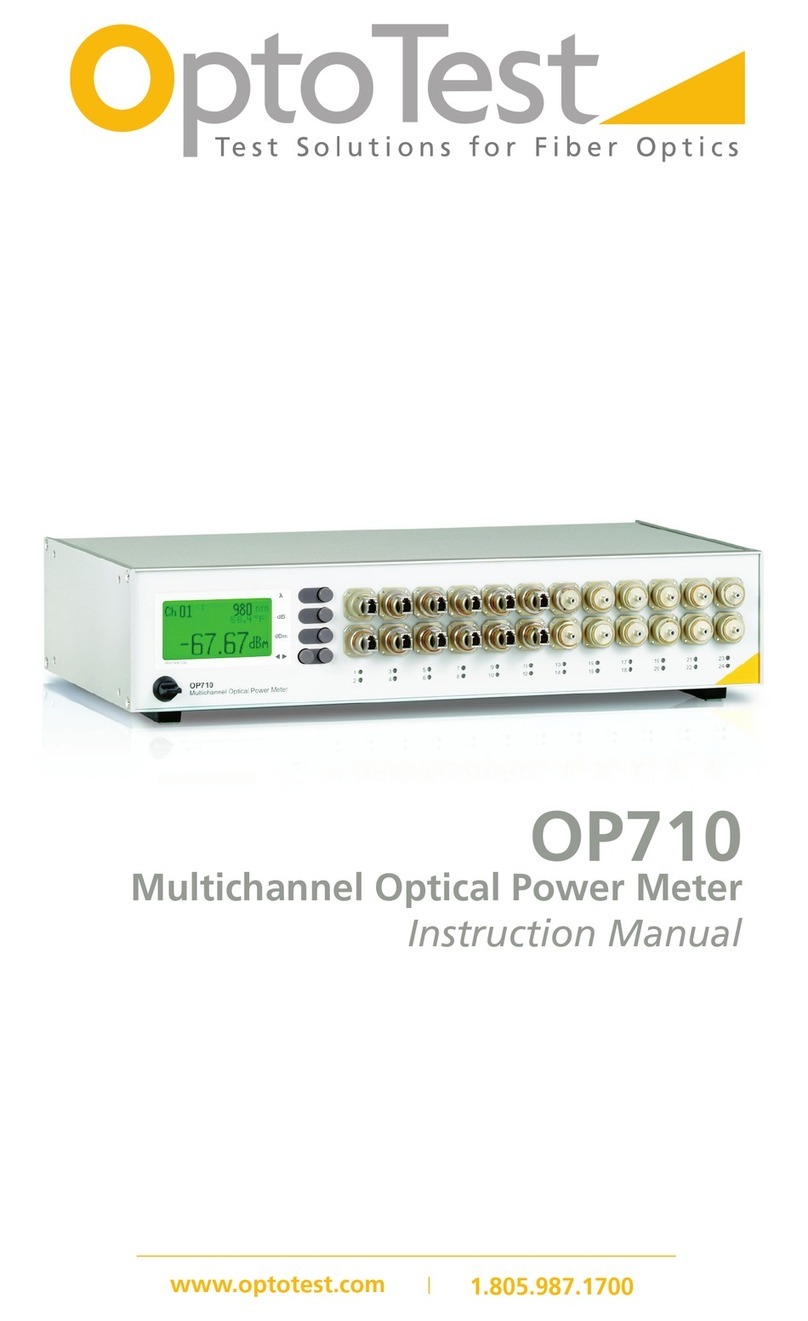
8 of 49
OP940-SW
Definition of Specifications
Recommended Recalibration Period
This is the recommended time period for re-calibration in order to maintain accurate
specifications. The recommendation is made based upon statistics on detector aging;
however it is up to the metrology policies and procedures within each company to
define the calibration cycles on optical power meters.
Optical Power Meter, Fiber Compatibility
The amount of areal coverage of the detector, or the portion of the light emitted from
the fiber being measured, depends on the mechanical features of the optical interface,
the active area of the detector and the numerical aperture (NA) of the fiber. A fiber
with a large NA, for example 100/140 multimode fiber, might not under-fill a small area
detector hence the absolute power reading will be less than actual.
Return Loss Range
The lower end of the return loss (low return loss = high reflection) defines the level where
the instrument is saturated by large reflections. The higher end of the return loss (high
return loss = very weak reflections) is given by capability of the instrument to amplify and
resolve reflection out of the noise floor.
Return Loss Accuracy
The Return Loss Accuracy is measured using an optical variable attenuator
connected to a >98% reflector. The insertion loss of the attenuator is initially
quantified against a reference optical power meter. The actual attenuation is
then used to calculate the generated reflection, where the resulting reflection
= 2x (variable attenuation + insertion loss of attenuator) + reflector coefficient.
Accuracy of return loss measurements can also be affected by the reference cable and
any excessive losses at the front panel interface.
































